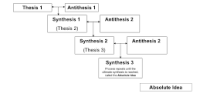An intangible cultural heritage (ICH) is a practice, representation, expression, knowledge, or skill recognized by UNESCO as part of a place’s cultural legacy. It refers to the activities, expressions, knowledge, abilities, and traditions passed down from generation to generation within a community or group of people. Buildings, historic sites, monuments, and relics are examples of cultural property.
Intangible heritage includes nonphysical intellectual resources such as folklore, customs, beliefs, traditions, knowledge, and language. In contrast to tangible cultural property, which comprises physical things and historic sites, intangible cultural heritage includes the live cultural aspects that define a community’s identity and cultural variety. UNESCO (the United Nations Educational, Scientific, and Cultural Organization) has played an important role in promoting and protecting intangible cultural assets around the world.
Key characteristics of intangible cultural heritage include:
- Oral Traditions: These can include storytelling, myths, legends, songs, and other forms of oral expression that convey a community’s history, beliefs, and values.
- Performing Arts: Traditional dances, music, theater, rituals, and other forms of performance that are central to a culture’s identity and often play a role in religious or social events.
- Traditional Craftsmanship: Skills and knowledge related to traditional crafts, such as pottery, weaving, carving, and other artisanal practices, often passed down through apprenticeships or family traditions.
- Social Practices, Rituals, and Festivals: Weddings, funerals, and other ceremonies, as well as annual or seasonal festivals, are examples of customs and rituals.
- Traditional Knowledge and Practices: Traditional farming practices, medicinal knowledge, and other knowledge developed and passed down through centuries.
UNESCO member states evaluate intangible cultural heritage in connection to tangible World Heritage, with an emphasis on intangible components of culture. UNESCO conducted a poll of states and non-governmental organizations in 2001 to try to reach an agreement on a definition, and the Convention for the Safeguarding of Intangible Cultural Heritage was drafted in 2003 to protect and promote it.
















